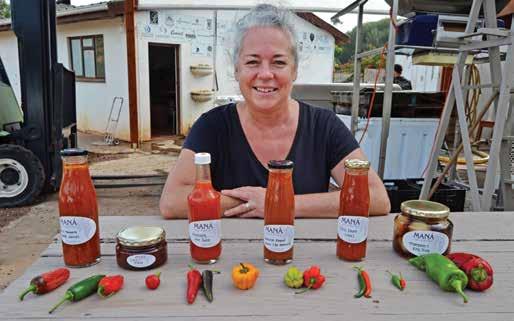20
www.thevillagenews.co.za
10 March 2021
MY ENVIRONMENT
Autumn in the Atlantic sharks, whales and dolphins try to scatter the shoal from below. The result is chaos at the surface, with waters turning white as the animals churn and hunt below. By Jax Bath
M
arch marks the beginning of autumn, with a coolness setting into the mornings and the sun dipping below the horizon ever earlier. March also happens to be one of my favourite months at sea. Like the leaves falling on land, autumn in the Atlantic is marked by certain changes that make the onset of winter apparent. Autumn is the time of year when pelagic seabirds reappear on our tours, the cheeky Sub Antarctic Skua takes their place in the sky parallel to every boat that leaves the harbour and, most of all, it is the beginning of the sardine run. Over the years, I have seen a number of bait balls of varying intensity. Often there are only birds feasting and whilst this is lovely, nothing quite compares to when dolphins join in on the feast. I’ve also been lucky to see this several times, but only once have I come across a bait ball that really encapsulated the majesty of it all, where every possible predator arrived to create burning water so awe inspiring that both the day and date are forever etched in my memory. It was an overcast autumn day with a chill to it, the sort of day on which you may not want to go out to sea if you consider yourself a fair-weather sailor.
Setting out to sea at this time of year comes with a certain type of anticipation. The ocean might be quiet and yield no mega fauna at all, but, more than any other time of year, there is also a chance to happen upon the best the ocean has to offer. At this time of year, sardines begin to make the annual migration from the cool waters of the west towards the warmer Indian Ocean. Surprisingly little is known about this natural phenomenon, but it is often claimed to be the largest shoal on earth as billions of these little fish move east. It is believed that some spawning takes place on the Agulhas bank, and the abundance of adult fish moving through attracts a host of predators that will gauge themselves on these oily fish. As we rounded one of the ragged points so typical of the Cape coastline, the sight was almost too much to take in. Shades of grey, yellow, white and the deep blue of the ocean collided as thousands of Cape Gannets and Common Dolphins formed an army around an already infiltrated school of sardine. The first sight I remember really taking in was that of the Cape Gannets on the water, so full that they could not fly, but so curious as to whether or not they could take another bite that they simply sat on the water and stuck their heads below. Like a small child in a rock pool, they watched as their food swam by before popping their heads up for a breath and moving out of the way of a surfacing dolphin.
From a wildlife watching perspective, what you’re really hoping to find out at sea is what we call a bait ball. This is when a school of fish moves together, staying as close as possible to one another in the hopes of surviving predation. The bait ball may give rise to the commonly used phrased “packed like sardines” and these little fish know all too well the importance of this. Unfortunately for them, their predators have learned to work in unison to divide them up and create a feeding frenzy that Blue Planet compared to burning water. This is what every wildlife watcher wishes to experience out at sea, the dance between predator and prey as birds provide an aerial attack while seals,
The dolphins surfaced and chased food below, flashing us with their golden flanks and in between them every so often, 20 tons worth of Brydes Whale would erupt from the surface, engulfing mouths full of water and sardine which would find themselves trapped in the whale’s baleen. There were easily 10 whales which had joined the party, the largest aggregation of Brydes Whales I have seen to this day. Later in the bait ball, we began to notice how Bronze Whaler Sharks had also surfaced, showing off their dorsal fins as they indulged in their favourite foods. These bait balls don’t typically last all that long, the fish are decimated in a surprisingly short amount of time and one might pass by an hour later to find no sign at all of what had happened.
Though these events are very much a hit and miss, luck of the day type of occurrence, I would encourage everyone to make an attempt to get to sea during what I like to call dolphin season. The dolphins have been out and about in Walker Bay in the past weeks, indicating an early but promising start to autumn on the ocean. If boats seem a little ambitious, sometimes these bait balls occur close enough to land to spot with a good pair of binoculars, so keep your eyes peeled on the ocean over the coming weeks to spot one of autumn’s best-kept secrets.
Until next week!






















